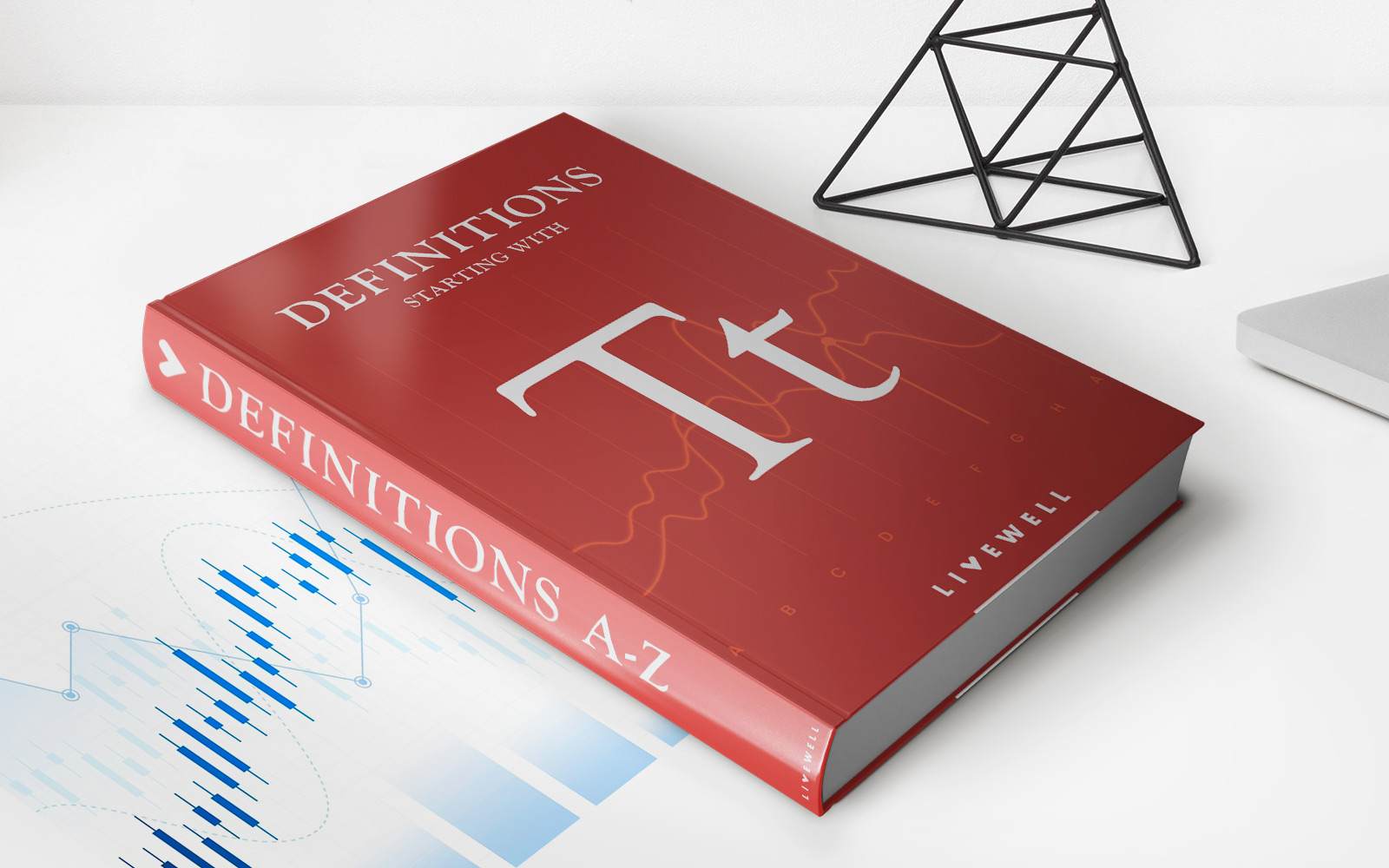Home>Finance>How Would Enterprise Value Change If A Company Had A Different Capital Structure?


Finance
How Would Enterprise Value Change If A Company Had A Different Capital Structure?
Modified: February 21, 2024
Learn how changes in a company's capital structure can impact its enterprise value and financial performance. Explore the key factors in finance that drive these transformations.
(Many of the links in this article redirect to a specific reviewed product. Your purchase of these products through affiliate links helps to generate commission for LiveWell, at no extra cost. Learn more)
Table of Contents
- Introduction
- Understanding Enterprise Value
- Importance of Capital Structure
- Calculating Enterprise Value
- Impact of Different Capital Structures on Enterprise Value
- Case Studies of Companies with Different Capital Structures
- Factors Influencing Enterprise Value with Different Capital Structures
- Benefits and Drawbacks of Modifying Capital Structure on Enterprise Value
- Strategies for Optimizing Capital Structure and Maximizing Enterprise Value
- Conclusion
Introduction
When evaluating a company, one of the key metrics to consider is its enterprise value. Enterprise value represents the total value of a company, taking into account both its equity and debt. It is an important measure for investors and analysts in assessing the true worth of a company and is used as a basis for comparing different companies within the same industry.
One factor that significantly affects enterprise value is a company’s capital structure. Capital structure refers to how a company finances its operations through a combination of debt and equity. It includes elements such as long-term debt, preferred equity, common equity, and other sources of financing. The composition of a company’s capital structure can have a significant impact on its enterprise value, influencing factors such as risk, cost of capital, and the ability to generate returns for investors.
Understanding how a change in capital structure can impact enterprise value is crucial for investors, analysts, and financial managers. By analyzing the relationship between a company’s capital structure and its enterprise value, it is possible to identify opportunities for optimizing capital structure to enhance overall value. Moreover, by examining case studies and considering various factors that influence enterprise value, we can gain insights into the potential benefits and drawbacks of modifying a company’s capital structure.
In this article, we will explore the impact of different capital structures on enterprise value and discuss the strategies that companies can employ to optimize their capital structures for maximum value creation. By understanding these concepts and considering real-life examples, readers will gain a deep appreciation for the significance of capital structure in determining enterprise value and making informed investment decisions.
Understanding Enterprise Value
Enterprise value (EV) is a comprehensive measure used to determine the total value of a business. It takes into account not only the market value of a company’s equity but also its debt and other financial obligations. By considering both equity and debt, enterprise value provides a more accurate representation of a company’s worth.
Enterprise value encompasses various components that contribute to a company’s financial standing. These components include the market value of equity, outstanding debt, minority interests, and cash and cash equivalents. The formula for calculating enterprise value is:
Enterprise Value = Market Value of Equity + Debt + Minority Interests – Cash and Cash Equivalents
Enterprise value is particularly valuable for investors and analysts because it allows for the comparison of companies with different capital structures. By considering the total value of a company rather than just its equity, enterprise value provides a more comprehensive measure for evaluating investment opportunities.
One advantage of using enterprise value is that it takes into account a company’s debt levels. By including debt in the calculation, enterprise value provides a more accurate picture of the company’s financial health. A company with a high level of debt will have a higher enterprise value, as it assumes the obligation to repay that debt. Conversely, a company with a low level of debt may have a lower enterprise value.
Enterprise value is also useful for determining the potential cost of acquiring a company. Investors or companies considering a merger or acquisition will often calculate the enterprise value of the target company to assess its overall worth. By comparing the enterprise values of different companies, investors can make more informed decisions about potential investments or acquisitions.
It’s important to note that enterprise value is not the same as market capitalization. Market capitalization, also known as market cap, represents the total value of a company’s outstanding stock. It is calculated by multiplying the share price by the number of outstanding shares. While market capitalization is a valid measure of a company’s value, it does not take into account the company’s debt or other financial obligations like enterprise value does.
Understanding enterprise value is essential for investors and analysts who want a comprehensive view of a company’s worth. By considering all aspects of a company’s financial structure, enterprise value provides a more accurate representation of its value and allows for better comparison and evaluation of investment opportunities.
Importance of Capital Structure
The capital structure of a company refers to the way it finances its operations by utilizing a mix of debt and equity. It plays a vital role in determining the financial health, risk profile, and overall value of a company. The importance of capital structure lies in its impact on various aspects of a company’s operations and capital allocation decisions.
One of the primary reasons why capital structure is significant is its influence on a company’s cost of capital. The cost of capital is the average rate of return required by investors to finance the company’s operations through a combination of equity and debt. The capital structure affects the overall cost of capital because equity and debt have different costs associated with them. Equity financing involves the issuance of shares to investors in return for ownership, while debt financing involves borrowing funds and paying interest on the borrowed amount.
A well-optimized capital structure can help a company minimize its cost of capital. By striking the right balance between debt and equity, a company can achieve a lower overall cost of capital, which enhances profitability and value creation. On the other hand, an inefficient or skewed capital structure can increase the cost of capital and negatively impact a company’s financial performance.
Furthermore, the capital structure plays a crucial role in determining a company’s risk profile. Debt financing introduces an additional layer of risk, as companies have to make regular interest payments and repay the principal amount on time. Higher levels of debt can increase a company’s financial risk, making it more vulnerable to economic downturns or other adverse events. On the flip side, too much reliance on equity financing can dilute shareholder ownership and potentially hinder a company’s ability to attract new equity investors.
The composition of a company’s capital structure also affects its financial flexibility. Companies with a well-diversified mix of debt and equity have greater flexibility in raising capital when needed. A balanced capital structure allows a company to tap into various sources of funding, such as issuing bonds, obtaining bank loans, or raising equity capital through public or private offerings. This financial flexibility is crucial for supporting growth initiatives, making acquisitions, or weathering financial challenges.
Capital structure decisions can also impact a company’s tax obligations. Interest payments on debt are usually tax-deductible, reducing a company’s taxable income and resulting tax liability. By utilizing debt financing, companies can often achieve tax advantages and lower their overall tax burden. This makes debt financing an attractive option, particularly for companies operating in higher tax jurisdictions.
In summary, the capital structure of a company is of significant importance due to its impact on the cost of capital, risk profile, financial flexibility, and tax obligations. By striking the right balance between debt and equity, companies can optimize their capital structure, enhance their financial performance, and maximize shareholder value.
Calculating Enterprise Value
Calculating enterprise value (EV) involves considering various components that contribute to a company’s overall worth. The calculation takes into account both equity and debt, providing a comprehensive measure of a company’s value. Here is a step-by-step guide on how to calculate enterprise value:
- Determine the market value of equity: Start by finding the market value of a company’s outstanding shares. This can be obtained by multiplying the current share price by the number of outstanding shares.
- Calculate the outstanding debt: Identify the total amount of outstanding debt that the company has. This includes long-term debt, short-term debt, and any other forms of borrowings.
- Consider minority interests: If the company has any subsidiaries or joint ventures, factor in the value of minority interests in those entities.
- Account for cash and cash equivalents: Subtract the company’s cash and cash equivalents from the previously calculated value. Cash and cash equivalents include items such as cash on hand, bank accounts, and short-term investments.
The formula for calculating enterprise value is:
Enterprise Value = Market Value of Equity + Debt + Minority Interests – Cash and Cash Equivalents
Let’s consider an example to illustrate the calculation of enterprise value. Suppose a company has a market value of equity of $500 million, outstanding debt of $200 million, minority interests of $50 million, and cash and cash equivalents of $100 million. Using the formula, we can calculate the enterprise value as follows:
Enterprise Value = $500 million (market value of equity) + $200 million (debt) + $50 million (minority interests) – $100 million (cash and cash equivalents) = $650 million
It’s important to note that enterprise value is a dynamic metric that can change over time. Market fluctuations, changes in debt levels, and movements in cash balances can all impact enterprise value.
Calculating enterprise value provides a comprehensive picture of a company’s overall worth. It considers both equity and debt, allowing investors and analysts to evaluate a company’s value while considering its financial obligations. By calculating enterprise value, stakeholders can make informed investment decisions, compare companies with different capital structures, and assess potential acquisition targets.
Impact of Different Capital Structures on Enterprise Value
A company’s capital structure can have a significant impact on its enterprise value. The composition of a company’s capital, including the proportion of debt and equity, influences various factors that determine its overall worth. Let’s explore the key impacts that different capital structures can have on enterprise value:
- Risk and Cost of Capital: The level of debt in a company’s capital structure affects its risk profile and cost of capital. A high debt-to-equity ratio increases financial risk and can result in higher borrowing costs, increasing the company’s cost of capital. This, in turn, may reduce the enterprise value of the company. On the other hand, a lower debt-to-equity ratio can lead to lower financial risk and a lower cost of capital, potentially increasing enterprise value.
- Tax Considerations: Different capital structures have implications for a company’s tax obligations. Interest payments on debt are typically tax-deductible, which can reduce a company’s taxable income and, in turn, its tax liability. By utilizing debt financing, a company can potentially achieve tax advantages and increase its after-tax cash flow, positively impacting its enterprise value. On the other hand, companies with higher equity proportions may have reduced tax benefits, impacting their enterprise value.
- Flexibility and Access to Capital: The capital structure can also impact a company’s ability to raise additional capital. Companies with a healthy mix of equity and debt may have greater flexibility in accessing different sources of capital. This increased financial flexibility can support growth initiatives, acquisitions, and other strategic investments that can enhance enterprise value. Conversely, companies with less diverse capital structures may face limitations in raising capital, which can restrict their growth potential and affect enterprise value.
- Market Perception: The market perception of a company’s capital structure can also impact enterprise value. Investors may have different preferences and risk tolerances when it comes to debt and equity. A company with a capital structure that aligns with market expectations and investor preferences may have a higher enterprise value, as it can attract a wider range of investors. However, if a company’s capital structure does not meet market expectations or is perceived as unfavorable, it may result in a lower enterprise value.
It’s important to note that the impact of capital structure on enterprise value can vary depending on the industry, business model, and overall economic conditions. Each company’s optimal capital structure will be unique, taking into account its specific circumstances and objectives.
By understanding the impact of different capital structures on enterprise value, companies can make informed decisions about their financing choices. Carefully considering the trade-offs between debt and equity and striking the right balance can lead to an optimal capital structure that enhances enterprise value and supports long-term success.
Case Studies of Companies with Different Capital Structures
Examining case studies of companies with different capital structures can provide valuable insights into how capital structure choices can impact enterprise value. Let’s explore two noteworthy examples:
- Company X: High Debt-to-Equity Ratio
- Company Y: Balanced Capital Structure
Company X, a manufacturing company, has a high debt-to-equity ratio, indicating a significant reliance on debt financing. This capital structure was initially adopted to fund expansion projects and finance acquisitions. The high debt levels have increased the company’s financial risk but allowed it to take advantage of growth opportunities.
The impact on enterprise value is twofold. First, the higher debt levels result in increased interest payments, reducing the company’s cash flow and potentially limiting its ability to invest in growth initiatives. This can put downward pressure on enterprise value. Second, the higher financial risk associated with the high debt levels may lower investor confidence, leading to a higher cost of capital and potentially decreasing enterprise value.
Company Y, an IT services firm, maintains a balanced capital structure with a mix of equity and debt financing. The company has effectively managed its debt levels while raising equity capital through public offerings to fund expansion and research and development activities.
This balanced capital structure has several positive impacts on enterprise value. Firstly, the company benefits from the tax advantages of interest payments on debt, reducing its tax liability and potentially increasing after-tax cash flow. Secondly, the balanced capital structure enhances financial flexibility, allowing Company Y to pursue strategic opportunities and investments that can boost future cash flows and enterprise value.
These case studies illustrate the different outcomes that capital structure choices can have on enterprise value. While a high debt-to-equity ratio can introduce risk and potentially lower enterprise value, it can provide access to funds for growth. In contrast, a balanced capital structure can optimize tax benefits, increase financial flexibility, and support long-term value creation.
It’s important for companies to carefully evaluate their capital structure decisions in light of their business goals, industry dynamics, and risk tolerance. By understanding the experiences of companies like Company X and Company Y, companies can make informed decisions to create an optimal capital structure that maximizes enterprise value.
Factors Influencing Enterprise Value with Different Capital Structures
The enterprise value of a company is influenced by a range of factors, especially when considering different capital structures. These factors play a crucial role in shaping the overall worth of a company. Let’s explore some key factors that can influence enterprise value with different capital structures:
- Debt-to-Equity Ratio: The proportion of debt and equity in a company’s capital structure is a significant factor in determining its enterprise value. A higher debt-to-equity ratio indicates a higher level of financial risk, which can lead to higher borrowing costs and a higher cost of capital. On the other hand, a lower debt-to-equity ratio indicates a lower risk profile and may result in a lower cost of capital, potentially increasing enterprise value.
- Interest Rates: The prevailing interest rates in the market can also impact enterprise value. Companies with a higher proportion of debt will be more sensitive to changes in interest rates. When interest rates rise, the cost of debt increases, potentially reducing enterprise value. Conversely, when interest rates decrease, the cost of debt decreases, positively impacting enterprise value.
- Industry and Market Conditions: The industry in which a company operates and the overall market conditions can influence its enterprise value. Different industries have different capital structure expectations and risk profiles. Companies operating in more stable industries or with predictable cash flows may have higher enterprise values, while those operating in more volatile industries may have lower enterprise values. Additionally, market conditions, such as economic downturns or market uncertainties, can impact investor sentiment and affect enterprise value.
- Growth Potential: The growth prospects and potential of a company are important factors in assessing enterprise value. Companies with strong growth potential are often valued higher by investors. The capital structure can impact a company’s ability to fund growth initiatives. A well-balanced capital structure that allows for adequate access to capital and financing options can enhance growth potential and positively impact enterprise value.
- Financial Performance and Stability: The financial performance and stability of a company play a significant role in determining enterprise value. Companies with consistent earnings, strong cash flow generation, and solid profitability are generally more attractive to investors and may command higher enterprise values. The capital structure can impact a company’s ability to generate profits and cash flows, therefore influencing its enterprise value.
- Market Perception and Investor Sentiment: The perception of a company’s capital structure by the market and investor sentiment can also influence its enterprise value. Investors may have preferences for a certain capital structure based on risk-reward expectations and other factors. A capital structure that aligns with market expectations can help generate positive investor sentiment, potentially leading to a higher enterprise value.
These factors are interrelated and can vary across industries and individual companies. It is essential for companies to assess and manage these factors carefully when considering different capital structures. By understanding how these factors influence enterprise value, companies can make informed decisions to optimize their capital structure and maximize their overall worth.
Benefits and Drawbacks of Modifying Capital Structure on Enterprise Value
Modifying a company’s capital structure can have both benefits and drawbacks that can impact its enterprise value. Let’s explore the potential advantages and disadvantages of modifying the capital structure:
- Benefits:
- Drawbacks:
a) Reduced Cost of Capital: Optimizing the capital structure can lead to a lower overall cost of capital for the company. By carefully managing the proportion of debt and equity, a company can minimize its borrowing costs and potentially increase profitability, thereby enhancing enterprise value.
b) Improved Financial Flexibility: Modifying the capital structure can provide companies with increased financial flexibility. This flexibility can be crucial in fueling growth initiatives, making strategic acquisitions, or navigating economic uncertainties. By accessing different sources of capital, companies can enhance their ability to generate cash flows and create value.
c) Tax Benefits: Adjusting the capital structure can have tax advantages, particularly in relation to interest payments on debt. By utilizing debt financing, companies can benefit from tax deductions on interest, potentially reducing their overall tax liability and improving after-tax cash flows, thus positively impacting enterprise value.
a) Increased Financial Risk: Modifying the capital structure by increasing debt levels can introduce higher financial risk. Companies with high levels of debt may be more exposed to changes in interest rates, economic downturns, or other adverse events. This elevated risk can result in a higher cost of capital and negatively impact enterprise value.
b) Reduced Flexibility in Capital Allocation: Modifying the capital structure can sometimes limit a company’s flexibility in capital allocation. For example, excessive reliance on debt financing may result in higher interest payments, reducing the funds available for growth initiatives or other strategic investments. This restricted capital allocation flexibility can hinder the company’s ability to enhance enterprise value.
c) Market Perception and Investor Confidence: Changes in the capital structure can impact market perception and investor confidence. Investors may have preferences or expectations regarding a company’s capital structure. Changing the capital structure in a manner that is perceived unfavorably by the market may lead to reduced investor confidence and negatively impact enterprise value.
It’s important for companies to carefully weigh the benefits and drawbacks before modifying the capital structure. Each company’s unique circumstances, industry dynamics, and risk appetite should be taken into consideration. Effective capital structure management involves finding the right balance between debt and equity to optimize the cost of capital, maintain financial flexibility, and enhance enterprise value.
Strategies for Optimizing Capital Structure and Maximizing Enterprise Value
Companies can employ various strategies to optimize their capital structure and maximize their enterprise value. These strategies aim to strike the right balance between debt and equity, manage risk, and enhance financial flexibility. Here are some key strategies to consider:
- Analyze and Evaluate Existing Capital Structure: Start by evaluating the current capital structure of the company. Assess the proportion of debt and equity, analyze the cost of capital, and identify areas of improvement. This evaluation will help determine the most effective strategy for optimizing the capital structure.
- Consider the Industry and Business Dynamics: Take into account the specific characteristics of the industry and business operations. Different industries may have varying capital structure expectations and risk profiles. Understanding these dynamics can help in determining an appropriate capital structure that aligns with the industry’s norms and the company’s needs.
- Assess Risk and Cost of Capital: Analyze the risks associated with the current capital structure and evaluate the cost of capital. Identify the potential impact of different capital structure scenarios on the cost of capital and enterprise value. Strive to strike a balance that minimizes risk while optimizing the cost of capital.
- Focus on Financial Flexibility: Enhance financial flexibility by diversifying sources of capital. Consider different financing options, such as issuing new equity, refinancing debt, or exploring alternative financing methods. This flexibility will allow the company to respond to changing market conditions, pursue growth opportunities, and maximize enterprise value.
- Evaluate Tax Efficiency: Assess the tax implications associated with the capital structure. Consider the tax advantages of interest payments on debt and the impact on after-tax cash flows. Optimize the capital structure to achieve efficient tax planning, which can positively impact enterprise value.
- Monitor and Manage Debt Levels: Keep a close eye on the company’s debt levels and manage them prudently. Excessive debt can increase financial risk and hinder enterprise value. Regularly review debt obligations, interest rates, and debt repayment schedules to ensure they are aligned with the company’s financial capacity.
- Communicate and Engage with Investors: Clearly communicate the company’s capital structure rationale and strategy to investors and stakeholders. Provide transparent information about the benefits and expected outcomes of the capital structure optimization. Engage with investors to address any concerns or questions they may have, building trust and confidence in the company’s approach.
Optimizing the capital structure is an ongoing process that requires careful analysis, monitoring, and adjustment. It’s important to consider the company’s specific circumstances, industry dynamics, and risk tolerance. By implementing these strategies, companies can enhance their capital structure, manage risks effectively, and ultimately maximize their enterprise value.
Conclusion
The capital structure of a company plays a vital role in determining its enterprise value. By carefully considering the mix of debt and equity, companies can optimize their capital structure and enhance their overall worth. A well-balanced capital structure can lead to a lower cost of capital, improved financial flexibility, and increased value creation.
Throughout this article, we have explored the various aspects of capital structure and its impact on enterprise value. We have discussed how enterprise value is calculated, the importance of capital structure, and the factors influencing enterprise value with different capital structures. Additionally, case studies have highlighted the real-life implications of capital structure choices.
We have also examined the benefits and drawbacks of modifying capital structure, along with suggested strategies for optimizing capital structure and maximizing enterprise value. It is essential to conduct a thorough analysis of the company’s current capital structure, evaluate the industry dynamics, and consider risk, cost of capital, financial flexibility, and tax implications when making capital structure decisions.
Companies need to maintain a keen eye on market expectations, investor sentiment, and financial performance as they navigate their capital structure optimization journey. Open and transparent communication with investors is also critical to gain their trust and support.
In conclusion, understanding the relationship between capital structure and enterprise value is crucial for businesses, investors, and analysts. By carefully assessing and adjusting the capital structure, companies can enhance their financial performance, manage risk effectively, and increase their enterprise value. Continual monitoring, evaluation, and adjustment of the capital structure will contribute to long-term success and maximize shareholder value.














